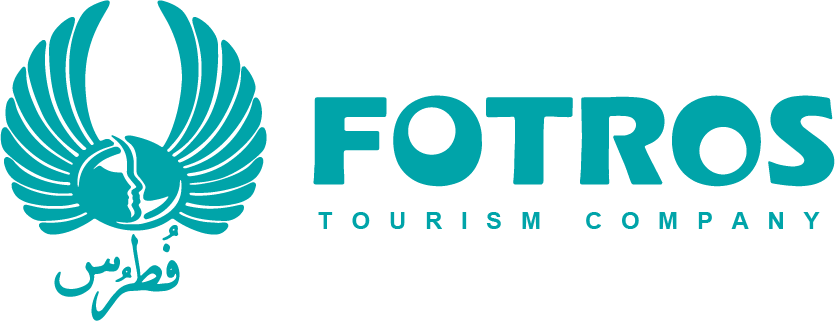
Medical Surgeries
Gastric Banding


Gastric banding, often referred to as Lap-Band or Realize Band, is a type of weight loss surgery or bariatric surgery. It involves the placement of a restrictive band around the upper part of the stomach to limit the amount of food that can be consumed. The primary goal of this procedure is to help individuals with obesity lose weight by reducing their food intake.
Here's how the procedure typically works:
Surgical Placement: A surgeon places an adjustable and inflatable silicone band around the upper part of the stomach. This band creates a small pouch at the top of the stomach, separating it from the rest of the stomach.
Adjustability: One of the advantages of gastric banding is that the tightness of the band can be adjusted as needed. This is done by injecting or removing saline solution from a port that is connected to the band. Adjustments allow for individualized weight loss progress and management.
Reduced Food Intake: With the smaller upper stomach pouch created by the band, patients feel full more quickly, which leads to reduced food intake. This helps in controlling calorie consumption and promotes weight loss.
Lifestyle Changes: To be successful with gastric banding, patients are required to make significant changes in their eating habits and adopt a healthier lifestyle. It is not a standalone solution but rather a tool to assist in weight loss.


Regular Monitoring: Patients need to undergo regular follow-up appointments with their healthcare providers to assess progress and make necessary adjustments to the band.
Gastric banding is considered a less invasive and reversible weight loss procedure compared to some other bariatric surgeries like gastric bypass or sleeve gastrectomy. However, it may have a lower success rate in terms of weight loss and can be associated with potential complications, including band slippage or erosion, and the need for frequent adjustments.
It's important to note that the popularity of gastric banding has waned in recent years due to the availability of more effective and less risky bariatric procedures. Patients interested in weight loss surgery should consult with a healthcare professional to determine the most suitable option based on their individual circumstances and medical history.
Before and aftercare for gastric banding, also known as laparoscopic adjustable gastric banding (LAGB) or simply a gastric band, is crucial for the success of the procedure and the long-term health of the patient. Gastric banding is a surgical weight loss procedure that involves placing a band around the upper part of the stomach to restrict the amount of food the stomach can hold. Here are the key aspects of before and aftercare for gastric banding:


Before Gastric Banding:
Medical Evaluation: Before the surgery, you will undergo a thorough medical evaluation, including physical and psychological assessments, to determine your suitability for the procedure. Your surgeon will review your medical history, conduct blood tests, and assess your overall health.
Prepare for Recovery: Plan for your recovery period, including taking time off work and arranging for support at home during the initial post-surgery period.
Consultation: You will meet with your surgeon to discuss the procedure, potential risks, and expected outcomes. This is the time to ask questions and address any concerns.
Nutritional Counseling: You may be required to meet with a dietitian or nutritionist to learn about preoperative dietary changes, postoperative dietary restrictions, and long-term nutrition planning.
Weight Loss Requirements: Some surgeons may require patients to lose a certain amount of weight or follow a specific diet before the surgery to reduce the size of the liver, making the procedure safer.
Psychological Support: Obesity surgery often has psychological components, so you may be advised to seek counseling or support to address emotional and behavioral factors related to overeating.
Quit Smoking and Limit Alcohol: It's generally recommended to quit smoking and limit alcohol consumption before the surgery, as these can impact recovery.
After Gastric Banding:
Follow Dietary Guidelines: After the surgery, you'll need to follow a strict diet as advised by your surgeon or dietitian. Initially, you'll be on a liquid diet and then gradually transition to solid foods. It's rucial to eat small, well-balanced meals and avoid high-calorie or high-sugar foods.
Hydration: Staying hydrated is important, but you should avoid drinking fluids during meals, as it can lead to discomfort.
Regular Follow-ups: Regular follow-up appointments with your surgeon or healthcare team are essential. Adjustments to the band's tightness may be necessary to optimize weight loss, so be prepared for these follow-up visits.
Exercise: Incorporate regular physical activity into your routine, as it will aid in weight loss and overall health.


Vitamin and Mineral Supplements: Gastric banding can affect nutrient absorption, so you may need to take vitamin and mineral supplements to prevent deficiencies.
Support and Counseling: Continue seeking support and counseling if needed to address any emotional or behavioral issues related to eating habits.
Lifestyle Changes: Make lasting lifestyle changes, including portion control, healthy eating, and regular exercise, to maximize the benefits of the surgery and maintain long-term weight loss.
Monitoring: Pay attention to any unusual symptoms or discomfort and report them to your healthcare team promptly.
Gastric banding is a tool to help with weight loss, but it's important to understand that it requires ongoing commitment and lifestyle changes for long-term success. Always follow your surgeon's recommendations and seek their guidance if you encounter any issues or need adjustments to your band.


The success rate of gastric banding
The success rate of gastric banding, also known as laparoscopic adjustable gastric banding (LAGB) or the LAP-BAND procedure, can vary from person to person and depends on several factors. Gastric banding is a type of bariatric surgery that involves placing an adjustable band around the upper part of the stomach to create a small pouch, limiting food intake and promoting weight loss. Success is typically measured by the amount of weight loss achieved and the improvement in obesity-related health conditions. Here are some factors that can influence the success rate of gastric banding:
Patient Adherence: A significant factor in the success of gastric banding is the patient's commitment to following the recommended dietary and lifestyle changes. Patients must adhere to a strict diet and exercise regimen to maximize weight loss and maintain it long-term
Band Adjustments: The band's tightness or restriction can be adjusted over time to optimize weight loss and minimize side effects. Regular follow-up appointments with a healthcare provider for these adjustments are essential.
Initial Weight: The success of gastric banding is often better in individuals with lower initial body mass indexes (BMIs). People with higher BMIs may require additional interventions to achieve substantial weight loss.
Medical Conditions: The presence of obesity-related health conditions, such as type 2 diabetes or sleep apnea, can also impact the success rate. Many patients experience improvements or remission of these conditions following successful weight loss.
Lifestyle Changes: Long-term success often depends on adopting and maintaining healthy eating habits, regular physical activity, and behavioral changes. Support from healthcare professionals and psychological counseling can be crucial.
Complications: Gastric banding can be associated with complications, such as band slippage, erosion, or intolerance. These complications can affect the overall success rate and may require further surgical intervention or band removal.
It's important to note that gastric banding has become less common in recent years due to the availability of more effective and less invasive weight loss procedures, such as gastric sleeve surgery (sleeve gastrectomy) or gastric bypass surgery. These procedures often lead to more significant and sustainable weight loss, but they also have their own risks and considerations.
The success rate of gastric banding can vary widely, with some patients achieving substantial weight loss and improved health, while others may not experience the desired results. If you are considering this surgery, it's important to consult with a bariatric surgeon who can provide personalized guidance based on your specific situation and health goals.
Surgery Details
 Anesthesia: General
Anesthesia: General Operation: 1 – 1:30 hour
Operation: 1 – 1:30 hour Clinical Stay: 1 day
Clinical Stay: 1 day Total Stay: a week
Total Stay: a week Back to Work: about 10 Days
Back to Work: about 10 Days Healing: 3 - 4 Weeks
Healing: 3 - 4 Weeks




Our services include:
![]() our online services include: quotes and consultation
our online services include: quotes and consultation
![]() Planning the highest word-level medical trips and quality hospitals and medical centers according to the patient's request and budget.
Planning the highest word-level medical trips and quality hospitals and medical centers according to the patient's request and budget.
![]() Appointing treatments by the most skilled and experienced doctors.
Appointing treatments by the most skilled and experienced doctors.
![]() Airport pick-up/drop off, check-ups, accompanying translator, book hotel (for patients and their families)
Airport pick-up/drop off, check-ups, accompanying translator, book hotel (for patients and their families)
![]() Pre-hospitalization / post-hospitalization care services
Pre-hospitalization / post-hospitalization care services
All-Inclusive Medical Travel Packages
based on your budget, our team will assist you in choosing the best hotels, doctors, and medical centers. Our packages include:
 Airport Pickup Services
Airport Pickup Services Airport Dropoff services
Airport Dropoff services Hotel
Hotel Ticket
Ticket visa
visa translator
translator Transfer
Transfer SIM Card
SIM Card Sightseeing
Sightseeing


 why Iran
why Iran
Patients may choose to have abdominoplasty (commonly known as a tummy tuck) in Iran for a variety of reasons
Cost, Quality of Care, Privacy and Discretion, Combined Tourism, no Waiting Times
![]()
Fotros is an Iranian health tourism company with a professional team consisting of a support team and word-level doctors in medical and cosmetic surgeries like Neurosurgery, Rhinoplasty, Breast cosmetic surgeries, Liposuction, tummy tuck, etc.
















 why Iran
why Iran